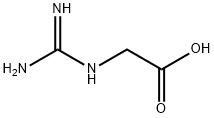A0689412
Ammonium acetate , ACS,≥97.0% , 631-61-8
Synonym(s):
Acetic Acid, Ammonium Salt;Ammonium acetate;Ammonium ethanoate;buffers
CAS NO.:631-61-8
Empirical Formula: C2H7NO2
Molecular Weight: 77.08
MDL number: MFCD00013066
EINECS: 211-162-9
| Pack Size | Price | Stock | Quantity |
| 500G | RMB103.20 | In Stock |
|
| 2.5KG | RMB367.20 | In Stock |
|
| others | Enquire |
Update time: 2022-07-08
PRODUCT Properties
| Melting point: | 110-112 °C (dec.) (lit.) |
| Boiling point: | 138.46°C (rough estimate) |
| Density | 1.07 g/mL at 20 °C |
| bulk density | 410kg/m3 |
| vapor pressure | 0.017-0.02Pa at 25℃ |
| refractive index | 1.4350 (estimate) |
| Flash point: | 136 °C |
| storage temp. | Store at +15°C to +25°C. |
| solubility | H2O: 1 M at 20 °C, clear, colorless |
| form | Solid |
| pka | 4.6(Acetic Acid), 9.3(Ammonium Hydroxide)(at 25℃) |
| color | White |
| PH | 7(1 mM solution);7(10 mM solution);7(100 mM solution);6.95(1000 mM solution) |
| PH Range | 6.7 - 7.3 |
| Odor | Slight acetic acid odor |
| Water Solubility | 1480 g/L (20 ºC) |
| Sensitive | Hygroscopic |
| λmax | λ: 260 nm Amax: 0.015 λ: 280 nm Amax: 0.01 |
| Merck | 14,495 |
| BRN | 4186741 |
| Stability: | Hygroscopic |
| InChIKey | USFZMSVCRYTOJT-UHFFFAOYSA-N |
| LogP | -2.79 |
| CAS DataBase Reference | 631-61-8(CAS DataBase Reference) |
| NIST Chemistry Reference | Ammonium acetate, anhydrous(631-61-8) |
| EPA Substance Registry System | Ammonium acetate (631-61-8) |
Description and Uses
Ammonium acetate solution can be used to study molecular biology, biological buffers, reagents and DNA and RNA purification. Ammonium acetate solution has been used to study pharmacokinetic analysis of α and β epimers of glycyrrhetinic acid in rat plasma. Ammonium acetate solution has also been used in a study to develop a method for the simultaneous determination of aristolochic acids A and B in some Chinese herbals and traditional Chinese patent medicines.
Safety
| Symbol(GHS) |  GHS07 |
| Signal word | Warning |
| Hazard statements | H319 |
| Precautionary statements | P305+P351+P338 |
| Safety Statements | 24/25 |
| RIDADR | UN 9079 |
| WGK Germany | 3 |
| RTECS | AF3675000 |
| F | 3 |
| TSCA | Yes |
| HS Code | 29152900 |
| Hazardous Substances Data | 631-61-8(Hazardous Substances Data) |
| Toxicity | LD i.v. in mice: 1.8 mg (NH4+)/20g (Welch) |





